It's a great day to look at a network of #SEO/#DigitalMarketing spam accounts with GAN-generated profile pics. #SEOShenaniGAN
(GAN = "generative adversarial network, the AI technique behind the fake faces generated by thispersondoesnotexist.com and similar tools)
cc: @ZellaQuixote
(GAN = "generative adversarial network, the AI technique behind the fake faces generated by thispersondoesnotexist.com and similar tools)
cc: @ZellaQuixote
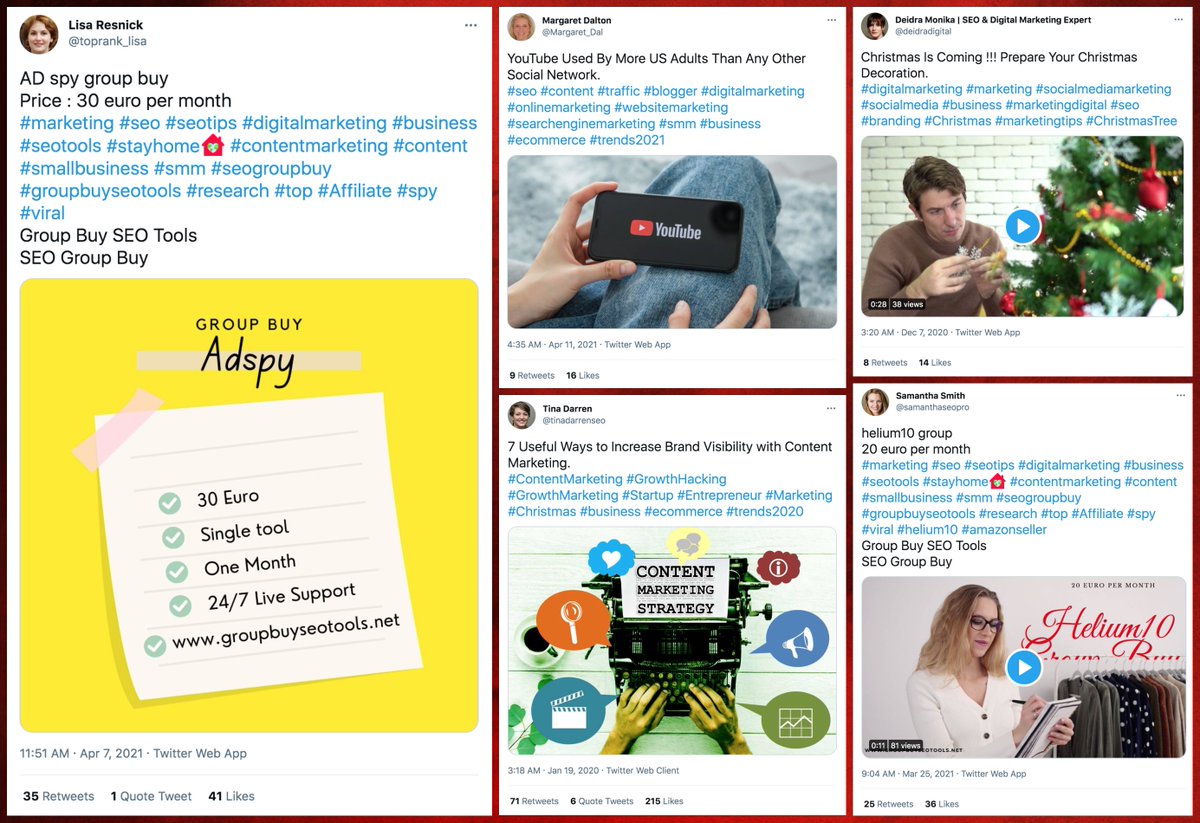
This network consists of 24 accounts created between May 2019 and December 2020. All have GAN-generated face images as their profile pics. Presently, all 24 (allegedly) tweet via the Twitter Web App. 


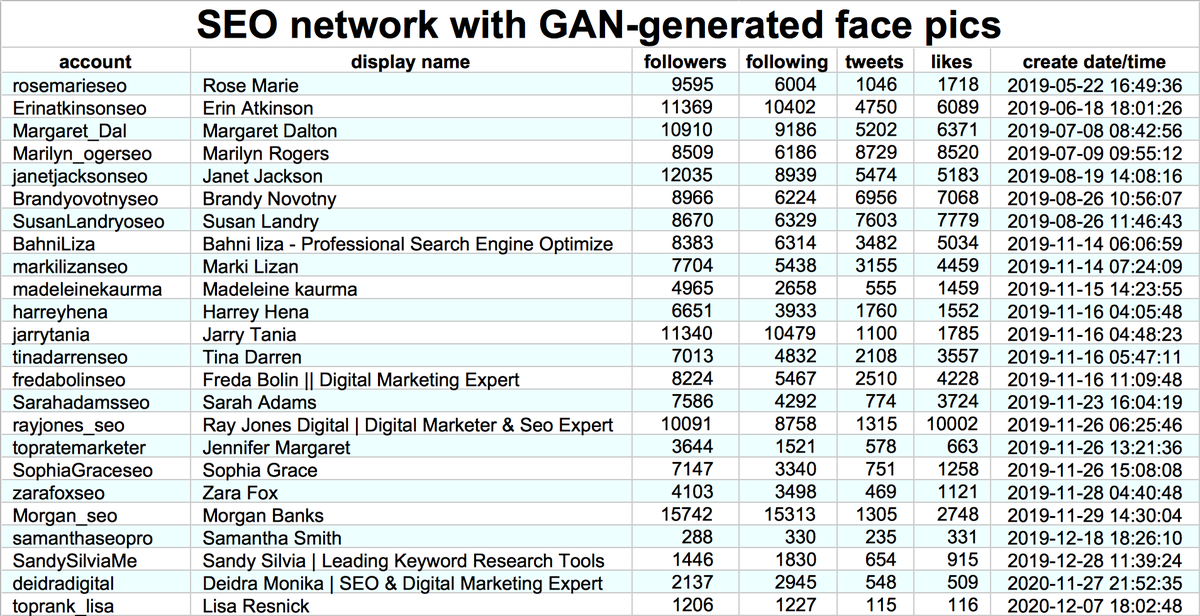
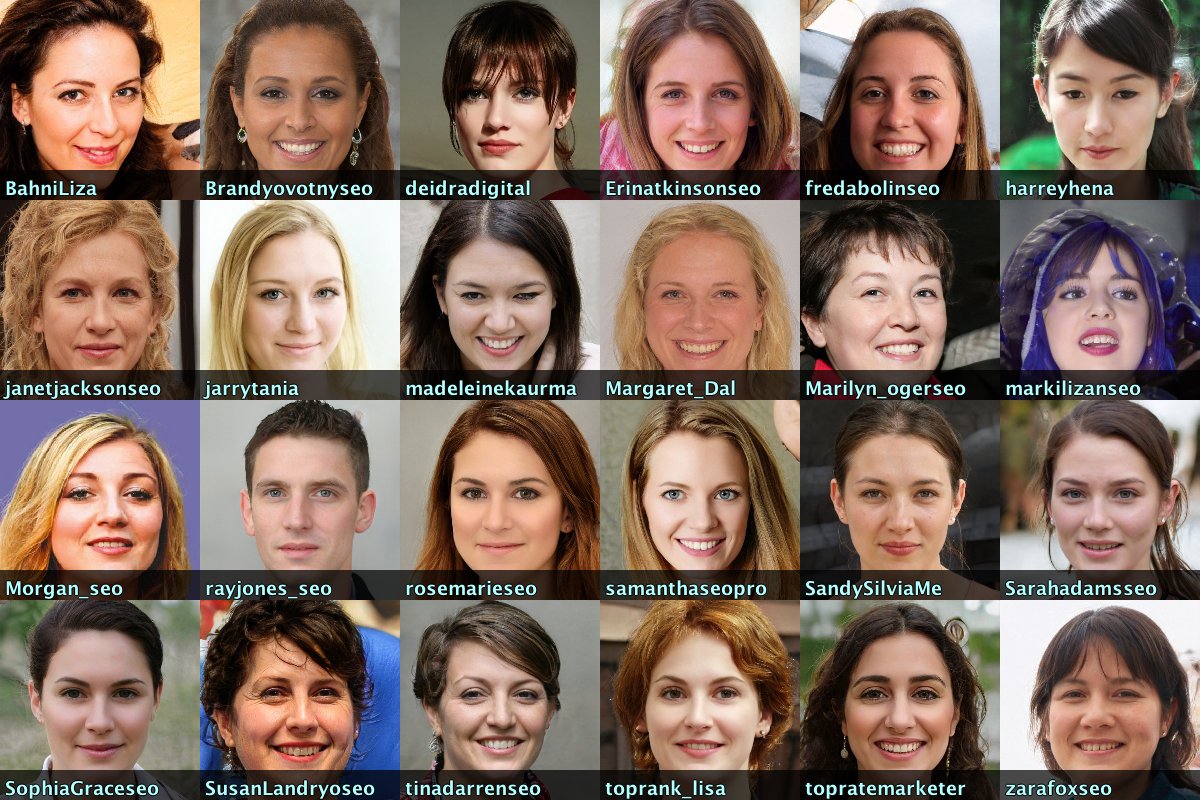
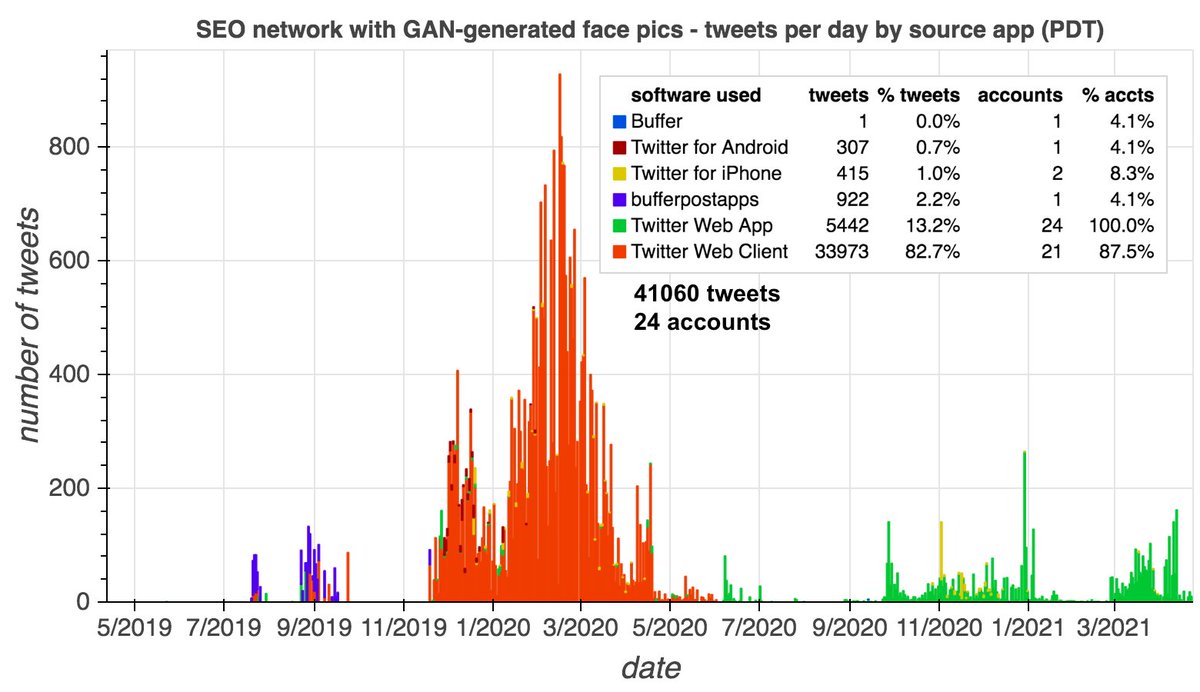
The current generation of GAN-generated face pics have the anomaly that the major facial features (particularly the eyes) are in the same pixel position on each image. This trait becomes easy to see when we blend the images together, as in this video:
This network's content is mostly retweets, and the accounts mostly retweet one another - 26806 of 33786 retweets (79.3%) are retweets of other members of the network. 

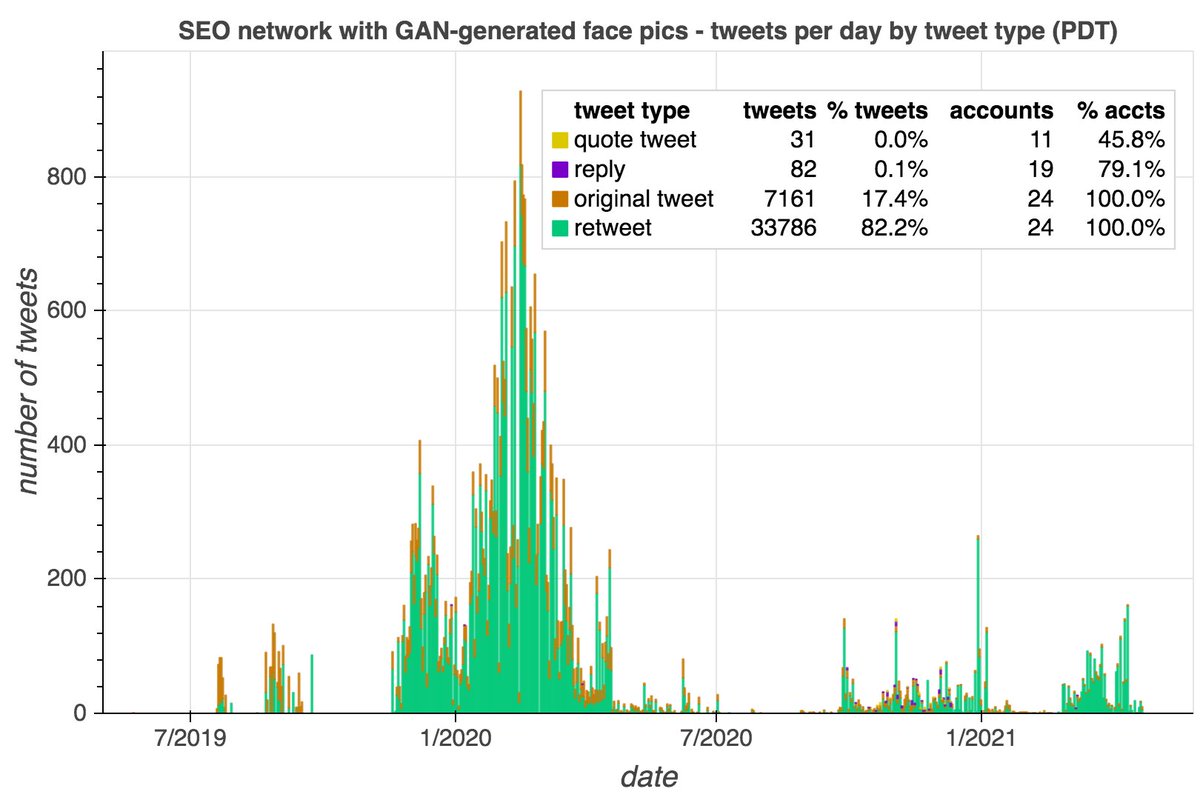
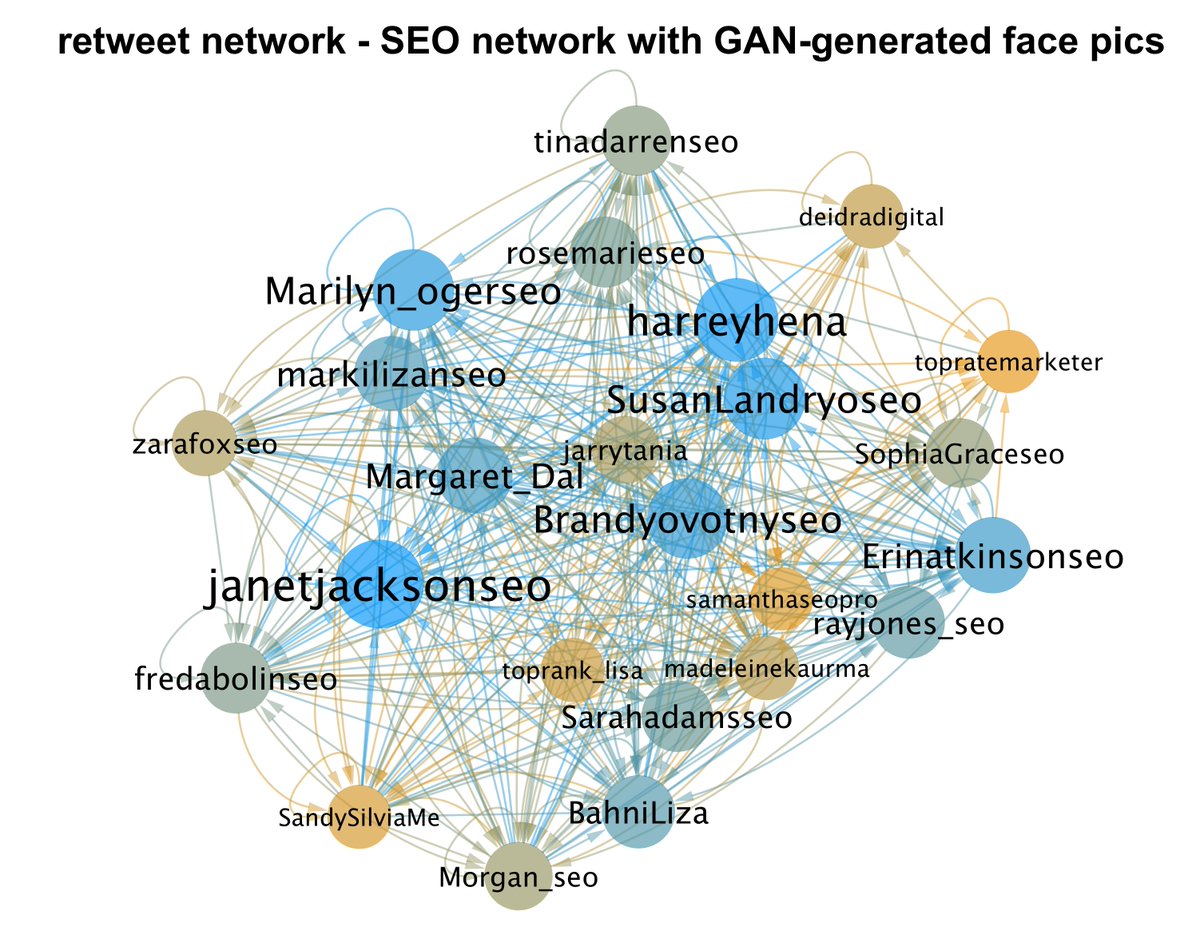
The network's original content is mostly hashtag spam, occasionally containing links to blog posts on digital marketing/SEO ("search engine optimization"). The hashtags used are marketing/SEO related, with #SEO, #DigitalMarketing, #SMM, and #Marketing, and being the most common. 
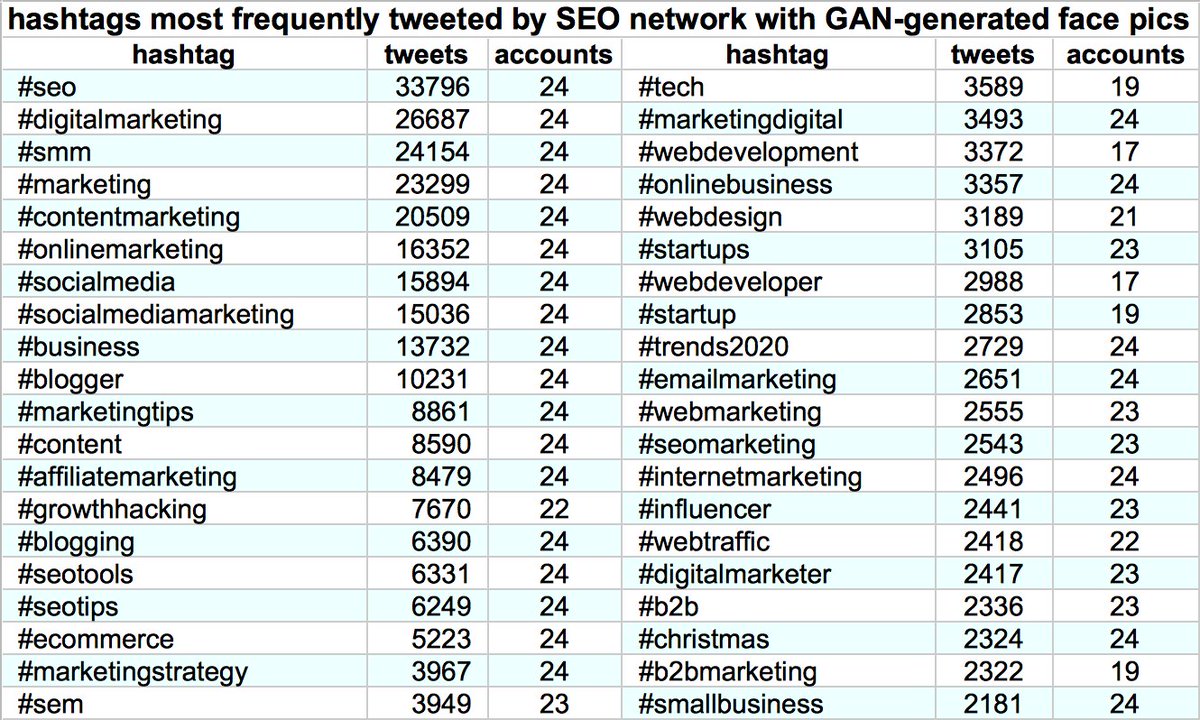
In addition to retweeting one another, the accounts in this network also follow each other profusely: each member of the network follows an average of 19 of the other 23 accounts in the network. 
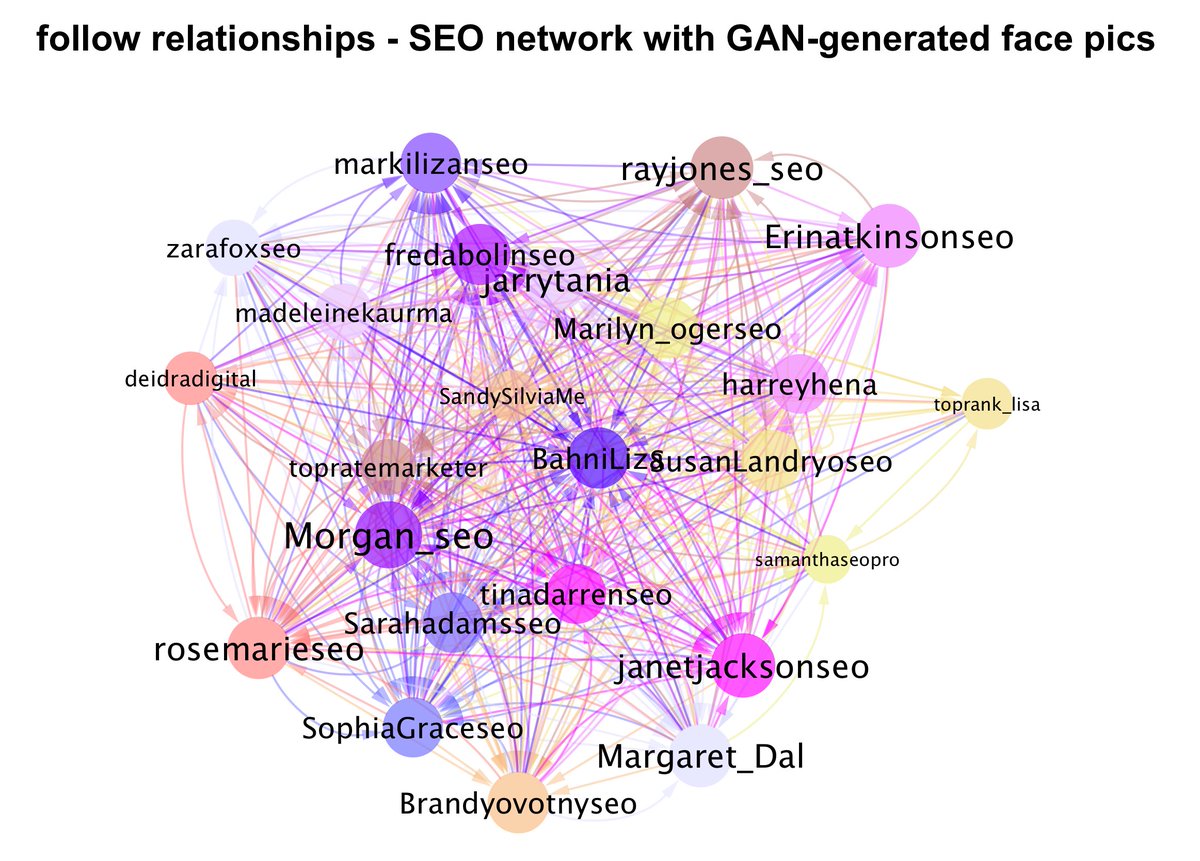
• • •
Missing some Tweet in this thread? You can try to
force a refresh































